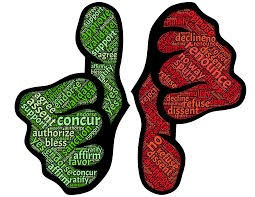SITE OR APP: REFUSE TO CHOOSE
- John Rae-Grant

- May 23, 2013
- 2 min read
Updated: Apr 13, 2020

I’ve been recently doing some consulting with startups that are struggling with the question of mobile versus web for their very first product. Everyone knows you have to do both, but which is more important, and which is more urgent? This question, plus some very provocative input from Daniel Odio (http://danielodio.com/ill-show-you-mine-if-you-show-me-yours-apps-that-is) has me writing up the strategy riff I’ve found myself iterating lately. Simply put: “App and web are parts of the same experience, use cases should include both, because users do. Social Network presence is the third part. Email may be a fourth part.” If someone describes a business to me and starts with “its an app which” or “its a web site which”, I now start to get uneasy. What most of us are building and designing are relationships. Relationships between a consumer and a set of products, between users and users, between readers, publishers and advertisers, between creators and their creations. These relationships have duration and depth according to their mutual value. For example: When I start looking for a product (say an appliance), I’ll do a web search. When I decide which store to go to, I might look for coupons. When I go to the store, I’ll pull up product info and coupons on my mobile. I might ask my friends what they think, and I’ll certainly read reviews. If I think I’ve made a good decision, I’ll share it with my friends. When I get home, I’ll start using the product, and I might need to look at the manual, or ask a question. Hopefully, I register the product (though that should have been done for me). Likely the retailer will send me something to get me to order or come purchase ancillary products. The next time I’m in the store, someone should ask me how that appliance is working out. The above is a very straightforward consumer scenario, which easily spans web, mobile, search, social networks, and email. Its a three way relationship between manufacturer, retailer and consumer, and between consumers. There is relationship value to be harvested at each step of the way, for each party. Only the very diligent and motivated consumers will maximize their own value, and only the most progressive retailers are starting to maximize theirs (I’m a leading adopter, and have yet to find myself compelled to install a retailer’s app). Right now, the one harvesting the relationship value is the search provider. That is suboptimal for everyone but them. So, we need to really think through how to use the simple relevance of mobile as a focused part of a more complex relationship which spans media, apps, services, and sites. Those who wish to delight, engage, and make more money from consumers will do a better job of understanding and influencing these complex usage patterns. The great thing about the connected world is that we can absolutely know where a consumer is in the relationship, and we can design the whole flow. Stop thinking transactionally. Think relationship. Think everywhere. Think forever.




Comments